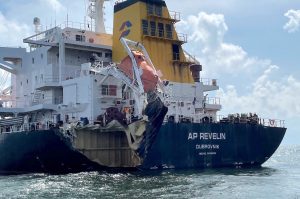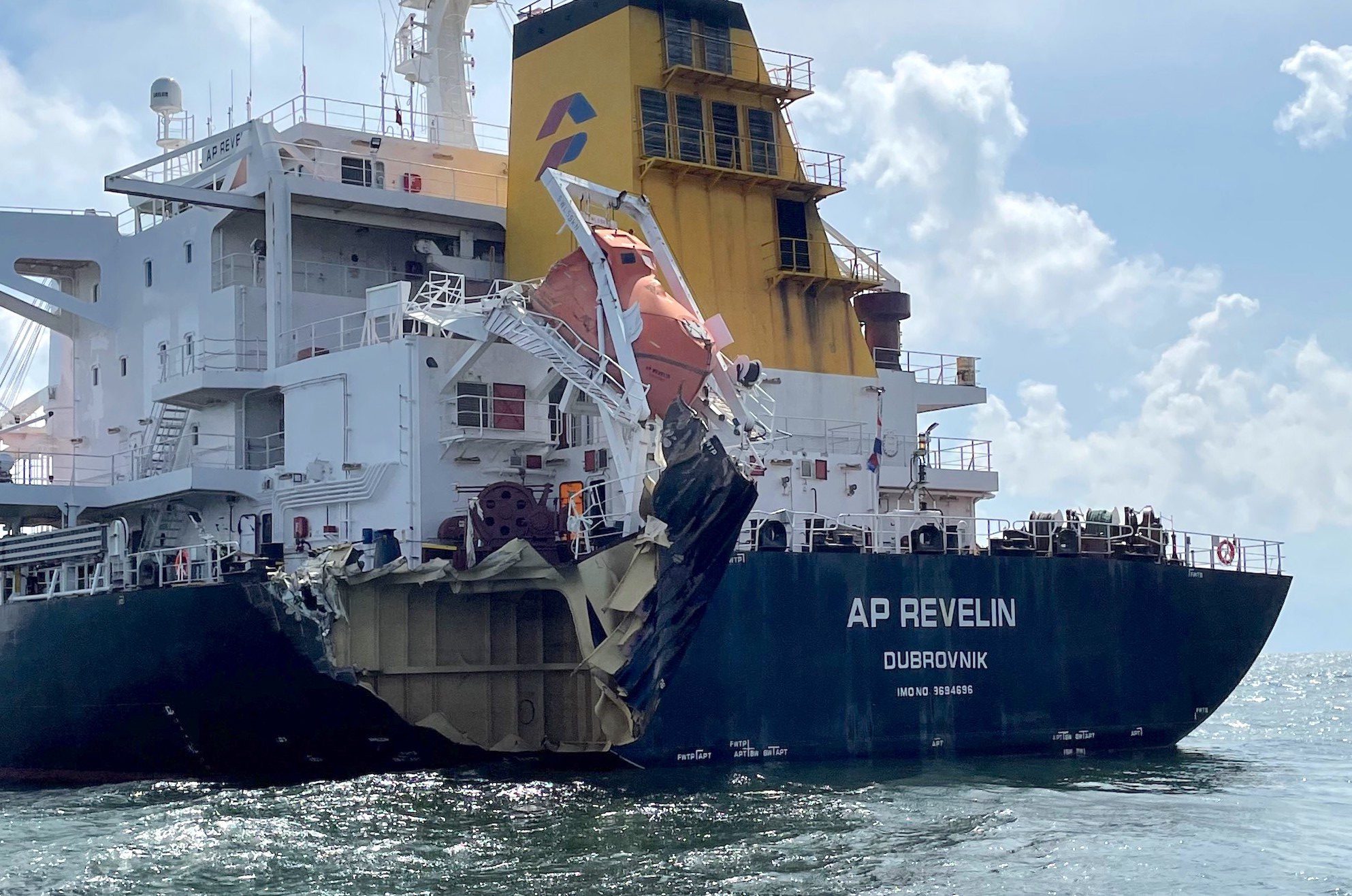Propulsion loss on ships, characterized by unexpected failure or reduction in the ship’s manoeuvrability due to propulsion system issues, presents significant challenges to maritime operations. This comprehensive guide, inspired by insights from “Reducing the Risk of Propulsion Loss,” offers detailed information on the causes, consequences, and strategies for managing propulsion loss.
This guide highlights the complexity and severity of propulsion loss in maritime operations. It emphasizes that propulsion loss, characterized by unexpected failures in the ship’s manoeuvrability due to propulsion system issues, is a critical challenge in maritime operations. It aims to provide a comprehensive understanding of the causes, consequences, and effective management strategies for propulsion loss, incorporating insights and practical advice for marine engineers and ship owners.

Causes of Propulsion Loss
Propulsion loss on ships, a critical maritime challenge, arises from various factors that compromise the vessel’s ability to maneuver effectively. This guide delves into the primary causes of propulsion loss, including mechanical and equipment failures, fuel and lubrication issues, human error, electrical and control system failures, and environmental factors. Understanding these causes is essential for preventing unexpected failures and ensuring the operational integrity of ships.
- Mechanical and Equipment Failures: Mechanical failures are a leading cause of propulsion loss. These failures can range from main engine issues to problems with auxiliary systems like generators. Regular inspection and maintenance of all mechanical components are crucial to prevent such failures.
- Fuel and Lubrication Issues: Contaminated fuel, improper fuel management, and inadequate lubrication can significantly impact propulsion systems. Ensuring fuel quality, regularly draining water from fuel tanks to prevent microbial infestation, and adhering to correct fuel changeover procedures are vital steps to mitigate these risks.
- Human Error: Operational mistakes and a lack of proper training can lead to propulsion loss. Crew training should include familiarization with engine room systems, emergency procedures, and changeover processes. Crews should also be trained to manually operate load share and manage generators effectively.
- Electrical and Control System Failures: Blackouts and failures in control equipment can cause propulsion loss. Load-shedding arrangements should be in place to protect generators against overload. Ensuring the correct maintenance of electrical systems, including Automatic Voltage Regulators (AVR) and generators, is essential.
- Environmental Factors: Operating in extreme weather conditions requires additional precautions. The crew should be aware of the limitations of the ship’s propulsion system in such environments and take necessary measures to ensure safety.
Consequences of Propulsion Loss
The loss of propulsion in maritime vessels can lead to significant navigational and safety risks, substantial economic impacts, and potential environmental damage. This section explores how propulsion loss poses imminent threats to ships, particularly in confined or challenging operational situations, and the broader implications of such incidents for the maritime industry. The consequences of propulsion loss underscore the need for robust management and preventive strategies to safeguard vessels, their crew, and the environment.
- Navigational and Safety Risks: Propulsion loss is a major accident hazard, especially for passenger ships, as it can lead to immediate loss of propulsion and steering. This poses imminent threats to the ship and its occupants, depending on the operational situation. For instance, incidents in confined waterways or during port manoeuvres, particularly in severe weather conditions, have a higher severity potential compared to incidents in the open sea. The DNV paper on managing blackout and loss of propulsion risks highlights the complexity of integrated systems in ships, which increases the risk of such incidents.
- Economic Impact: The economic impact of propulsion loss is considerable. Machinery damage accounts for a significant percentage of all passenger ship casualties, leading to financial losses, delays in delivery times, and threats to the safety of people onboard. The maritime industry faces challenges with new fuels and regulatory compliance, which could increase the risks associated with propulsion loss. Moreover, major incidents can negatively affect a company’s reputation, impacting earnings, profit, and shareholder value.
- Environmental Damage: Propulsion loss near sensitive marine areas can result in ecological harm, particularly in the event of accidents involving spills. The risk of propulsion loss increases in extreme weather conditions and when navigating in sensitive environmental areas. As the maritime industry transitions to cleaner energy carriers and more efficient systems, the complexity of these integrated systems can challenge our understanding and management of the risks involved.
Preventive and Corrective Actions
Effective management of propulsion loss entails a comprehensive set of preventive and corrective actions. This guide outlines key strategies, including engine isolation and failure procedures, emergency generator testing, regular maintenance, fuel quality management, crew training, technological solutions, adherence to safety protocols, and effective communication and coordination. Implementing these measures helps mitigate the risks associated with propulsion loss and enhances the overall safety and reliability of maritime operations.
- Engine Isolation and Failure Procedures: Engineers should be trained to isolate a cylinder on the main engine in the event of failure and establish robust ‘failure to start’ procedures and blackout checklists. This includes understanding the interrelated causes of faults that lead to blackout and loss of propulsion and managing these risks efficiently.
- Emergency Generator Testing and Power Management: Weekly tests of the emergency generator, including all starting methods, are crucial. During manoeuvring operations, running multiple generators in parallel ensures sufficient power availability. Testing the astern operation of the main engine before critical navigation phases like approaching a pilot station or berth is essential.
- Regular and Thorough Maintenance: Routine maintenance of propulsion systems, including engines, fuel systems, and electrical components, is critical. Proper maintenance of all equipment, including control and automation systems, helps prevent loss of propulsion.
- Fuel Quality Management: Using high-quality fuel and maintaining clean fuel systems are pivotal. Regularly draining water from fuel tanks to prevent contamination helps avoid issues like poor fuel quality or contamination that could lead to propulsion loss.
- Crew Training and Drills: Conducting regular training and emergency drills for propulsion control and blackout scenarios is important. Crew members should be familiar with engine room systems, changeover procedures, and emergency response protocols, including rapid recovery from blackouts and propulsion loss.
- Technological Solutions and Monitoring: Advanced monitoring systems should be utilized to detect and diagnose potential issues early. Ensuring all system temperature and pressure alarms, fuel filter differential pressure transmitters, and control systems are accurate and operational is key to preventing propulsion loss.
- Adherence to Safety Protocols and Regulatory Frameworks: safety regulations and guidelines, such as IMO rules and SOLAS regulations, are essential. These regulations provide a minimum technical standard for blackout prevention and recovery, and ships should aim for higher reliability or availability through additional measures like RP (Redundant Propulsion) or DYNPOS (dynamic positioning system) notations.
- Electrical Power Management: Implementing load shedding or equivalent arrangements protects generators against overload. Ensuring adequate electrical capacity before starting heavy equipment, such as lateral thrusters and mooring equipment, is crucial to avoid overloading the power system.
- Emergency Generator Readiness: Regular testing of emergency generators, including different starting methods, is essential. Operating the emergency generator on load as close to maximum capacity as possible for at least one hour every month ensures readiness in case of emergency.
- Effective Communication and Coordination: Maintaining efficient communication between the bridge and engine room is vital. Exchanging critical information helps make informed decisions during emergencies and manage risks effectively.
- Corrective Actions Post-Incident: Accurately recording the position and time in logbooks, conducting root cause analyses, and implementing corrective actions to prevent recurrence is crucial following an incident. Using emergency procedures, such as dropping anchors, can effectively manage the situation during propulsion loss
In conclusion, propulsion loss on ships is a multifaceted issue that requires a comprehensive approach to management, including preventive maintenance, crew training, adherence to safety protocols, and effective emergency response. By understanding the causes and implementing strategic measures, the maritime industry can significantly reduce the risks associated with propulsion loss, ensuring safer and more reliable vessel operations.


nice. thank you.